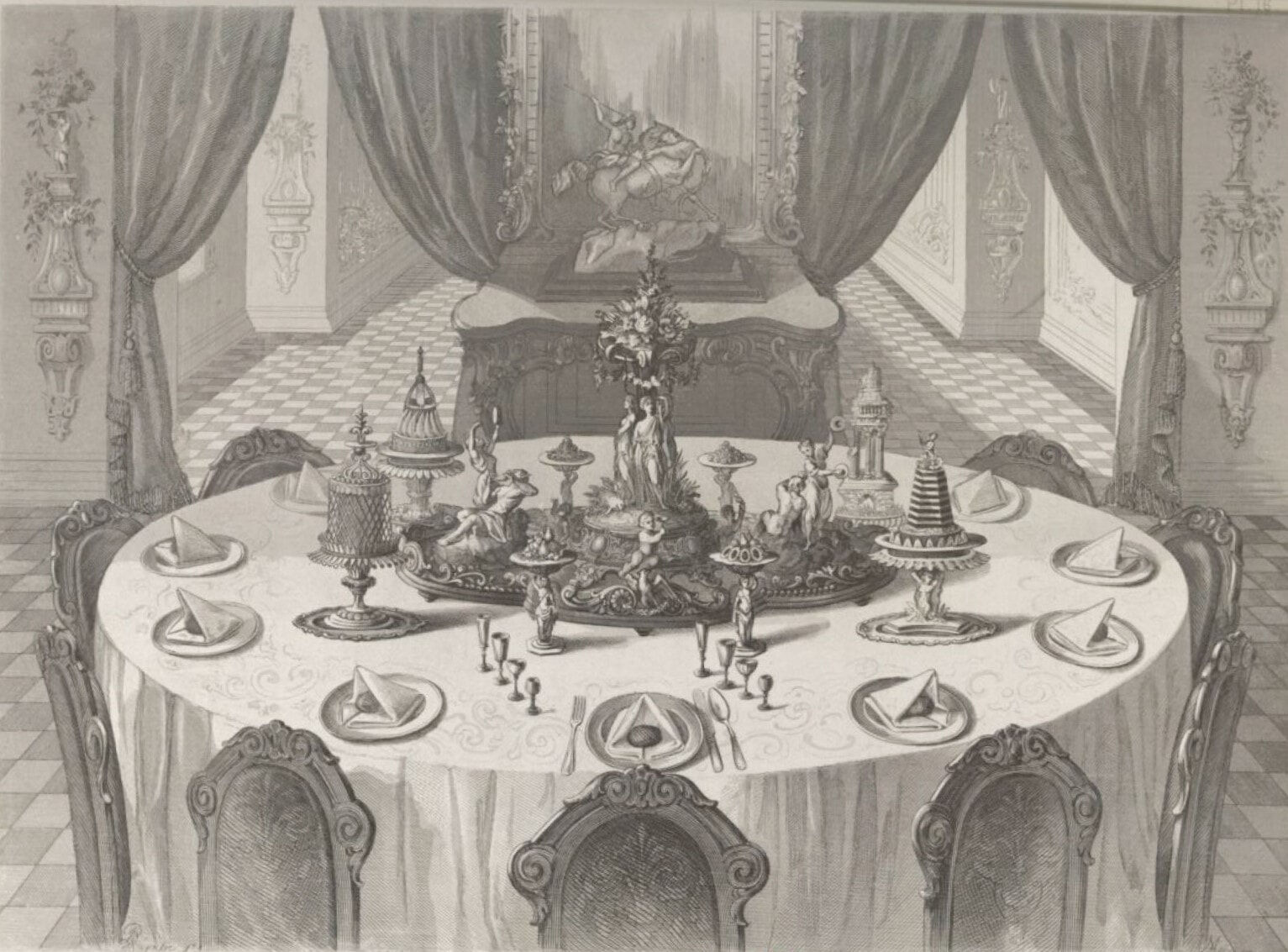THE ART OF DINING: DINING À LA RUSSE

THE ART OF DINING: DINING À LA RUSSE
By Anne Glynn
Dining à la russe was a new style of dining that replaced service à la française (see Fairhall 5). It originated in the Russian court and was introduced into French society at a dinner given by the Russian diplomat, Prince Borisovitch Kourakin (1752 –1818) in 1810 at Clichy.
It is a style of dining that we are more familiar with - whereby the courses of the meal are brought to the table in sequence. It is thought that Napoleon Bonaparte he was on campaign during the Patriotic War against Russia in 1812 and popularised it during la République.
After the guests were seated, they were each presented with an already filled plate of food consisting of a variety of hot or cold appetisers. This was followed by two soups, one thick and one clear, several entrées and often sorbet. The main course was meat, poultry or fish, initially shown whole so guests could appreciate it, then carved at the sideboard by the valet and served with a side dish of potatoes, vegetables, or salads with the appropriate sauces. A hot and cold dessert came next finishing with coffee and liqueurs. Each course was presented by the valet and plates and cutlery were replaced after each course. There could be up to twelve courses but by the late 1800s in response to new ideas about diet, the number of courses were reduced to eight.
Dining à la russe remained popular, as food was served hot, and everyone had a chance to taste all that was available. In order that the guests knew exactly what they were eating, a menu was laid out for each person. There was less extravagant waste, the tablecloths stayed cleaner, but as more food was placed on the plates, more food was eaten. Ladies no longer sat together but were interspersed with the men, however rank and status continued to determine a guest’s place at the table. Until 1850, fresh flowers were not placed on the table as decoration as it was thought the perfume would contrast too much with the aroma of the food. After that date however, exquisite fresh flower arrangements or plants in fancy pots were the decoration in the middle of the table and these were intermingled elegantly with sweetmeats and fruits for dessert. Flowers that could withstand the heat of the room and were regarded as acceptable included Iceland poppies or silver honesty with scarlet geraniums. However, fashion fluctuated, and it was important to keep abreast to what was avant-garde.
Due to the high number of servants required for dining à la russe, this style of dining was regarded as inappropriate for small households, however the emergence of the rich new middle class ensured its continuity and success. Wealth was also seen in the size of the coordinated porcelain dinner services, the number of wine glasses, the number of courses and the table decoration. Specialty cutlery like fish and fruit knives and forks were needed but knives were no longer used for piercing food, so the pointed blade became rounded. The day of the long-drawn-out meal was over. The meal using dining à la russe style lasted 1½ hours, so this meant order and efficiency in the household was paramount. Equally important was that this was done elegantly.
The diner was able to concentrate on one course at a time, so the focus was on the quality of the food and how it was prepared and presented. This appreciation of good food meant that good chefs were esteemed and highly sought after, such as Antoine Careme and Auguste Escoffier.
We may find aspects of dining à la russe familiar to our modern-day dining, especially the use of menus and service of filled plates by waiters at restaurants.
Above | Cuisine artistique : étude de l'école moderne. Partie 2 (Author Urbain Dubois)
This article was first published in fairhall, Issue 6, July 2012, pp 18.
Journals
About TJC
Explore
Contact
VISIT
See our VISIT page for hours and directions
BY PHONE
+61 3 9416 2515
BY POST
PO Box 79, East Melbourne VIC 8002
ONLINE
General enquiries
Membership enquiries
Shop
Donation enquiries
Subscribe to E-Newsletter



